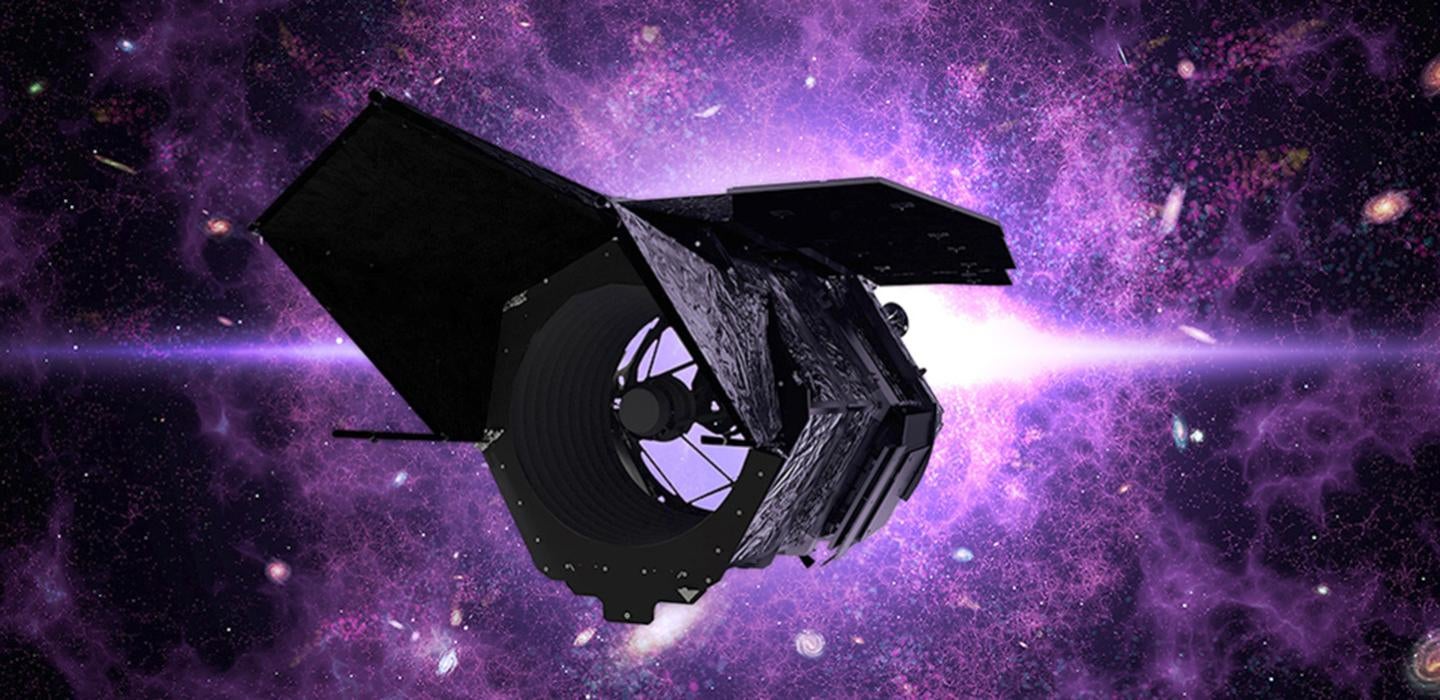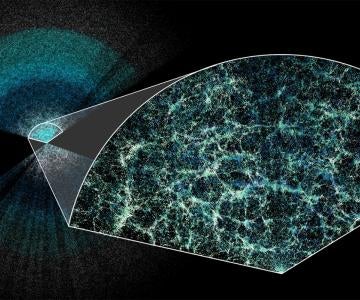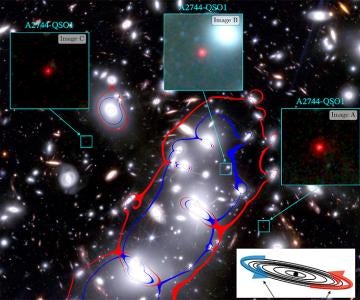
Subscribe to Pittwire Today
Get the most interesting and important stories from the University of Pittsburgh.Pitt people helped get the Hubble telescope into space. We were among the first to use the James Webb Space Telescope when it launched in 2021. Now, four Pitt researchers will play an integral role in developing the Nancy Grace Roman Telescope, which aims to better understand the nature of dark energy and of the dark matter that shapes the structures we see in it.
Once up and running, the telescope should help us to better understand the evolution of our universe.
Years ahead of its projected 2027 launch date, NASA has funded four researchers from the Kenneth P. Dietrich School of Arts and Sciences to begin working on Roman’s infrastructure. With collaborators across the globe, they’ll develop the software and algorithms needed to accurately interpret the massive amounts of data the telescope will collect.
The telescope was named after “Mother of Hubble,” Nancy Grace Roman, who was the first chief of astronomy at NASA’s Office of Space Science and the first woman to hold any executive position in the agency. The telescope has a primary mirror that is 2.4 meters (7.9 feet) in diameter — the same size as that of the Hubble Space Telescope. But Roman’s field of view is 200 times greater than the Hubble, capturing more of the sky with less observing time. Its wide field instrument will measure light from a billion galaxies over the course of the mission lifetime as it helps researchers solve, among other things, the mysteries of dark matter and dark energy.
Searching for supernovae
Pitt professors Mi Dai and Michael Wood-Vasey are part of a multi-institutional team co-led by researchers at NASA, the University of Hawai’i, Baylor University and Duke University that has been awarded $11 million to prepare Roman to better observe and analyze type Ia (one-A) supernovae. These exploding stars are special: they have known intrinsic brightness and so, with a bit of math, researchers can work out how far away they are by measuring how brightly they appear to us.
Since the light from those explosions has been traveling for billions of years, Roman is actually seeing billions of years into the past.
"The Roman Space Telescope will let us see supernovae back to when dark energy was just starting to exert its influence in the Universe," Wood-Vasey said. He’ll work on developing algorithms to improve Roman’s ability to find these supernovae in a sky dense with bright, fuzzy objects through a process called image subtraction.
“Take an image,” he said. Later, “take an image that overlaps the first. Compare the two.” If something new has come into view, it might be a supernova. That’s image subtraction. As straightforward as it seems, even a slight change in temperature can affect the image, so Wood-Vasey and team are working on better image processing algorithms to ensure, “nice, clean, good image subtraction.”
He'll also assist a team designing the system that alerts researchers when Roman has detected a potential type Ia supernova.
[Why do galaxies stop making stars?]
Dai will work on different ways of ensuring Roman collects the best possible data for researchers. She’ll update existing supernovae models to take advantage of the improved data coming from the new telescope. And she’s developing tools to help determine the best observation strategies for Roman.
“What’s the best cadence for imaging, the best exposure times? Things like that,” she said. “We’ll need to carefully decide what the best strategy is, not only for type Ia supernovae science,” but for all the other science Roman will enable as well.
Crunching dark data
Jeffrey A. Newman, professor, and Brett Andrews, research associate professor, are part of a project infrastructure team that was awarded a five-year, $19.5 million from the Jet Propulsion Laboratory (JPL) grant to develop computational tools to create three-dimensional maps of galaxies and dark matter — matter we don’t see directly, but whose existence can be inferred by its gravitational effects.
To make sure the tools are accurate, the team — led by the JPL and including researchers from Carnegie Mellon University — will develop simulations of Roman telescope data using fake data sets but real computational tools for analysis. If the tools can accurately map the location of galaxies and dark matter in the simulation, then they should be able to do the same with the data captured by the Roman.
Both Newman and Andrews were each awarded nearly $300,000 in grants to lead projects of their own. Both will also include Rachel Bezanson, professor in the Department of Physics and Astronomy, and researchers from Carnegie Mellon, Caltech and UC Davis. Newman will work to more accurately describe where galaxies exist in the universe. Andrews will use machine learning to improve the precision with which light is used to map the distance to galaxy.
Ultimately, Andrews and Dai, Newman and Wood-Vasey and the dozens of teams working on preparing the Roman telescope are using different methods in an effort to understand the same things: the history of dark matter and dark energy and the effects both have on our universe and the matter within it.
A leading theory of dark energy is that it’s a kind of background energy of space that repels itself, causing the universe to expand faster and faster. “Currently the data is consistent with the simplest models for dark energy, but Roman will give us much more precision,” Newman said.
Although, he added, “Our hope is that that’s wrong.
“Our hope is that this simple model is not what's really causing the accelerating expansion, but that really there is some new form of physics — some new particle or new field — in which case Roman would give us the precision we need to start to characterize that.”
— Brandie Jefferson, visualization of the Nancy Grace Roman Telescope provided by NASA





